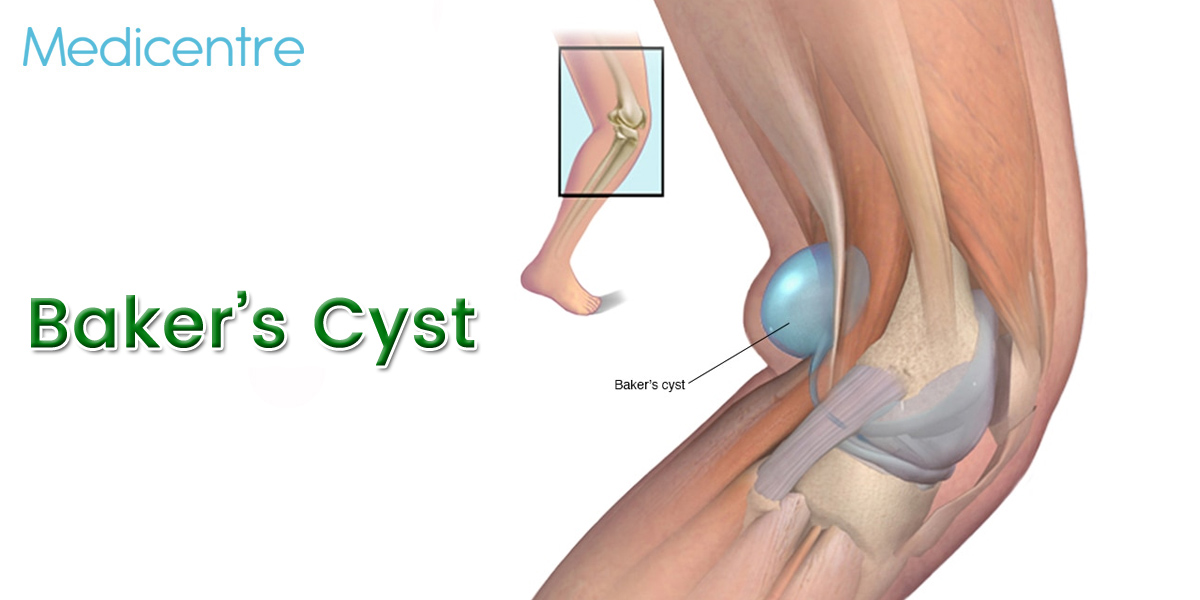Baker’s Cyst
Baker’s Cyst is the type of cyst filled with fluid and causes a bulge and feeling of tightness just behind your knees. It accompanies severe pain which worsen gradually when you fully flex or extend the knee or when you are active.
Also called popliteal cyst, Baker’s Cyst is basically caused due to knee joint conditions like cartilage tear or arthritis. These are the knee joint conditions that cause the knee to create the excessive fluid and this leads to Baker’s Cyst. In most of the cases, Baker’s Cyst also cause swelling in knee area and it makes movement challenging and complicated. Treatment is available for curing the underlying cause which provides relief from Baker’s Cyst.

What are the Symptoms of Baker’s Cyst?
In most of the cases, Baker’s Cyst doesn’t cause any pain or tingling and it may easily go unnoticed. Some of the signs to identify the presence of Baker’s Cyst include:
- Knee pain
- Swelling behind the knee area and extended to legs
- Stiffness
These symptoms worsen when you are active or standing for long hours when you are having Baker’s Cyst.
What are the Causes of Baker’s Cyst?
A naturally present lubricating fluid in knee called synovial helps the legs to swing flawlessly and this eliminates the friction between the moving parts present in your knees. In some hyperactive people, this lubricating fluid is produced in excessive quantity which leads to rebuilding of fluid in the area behind your knee and this causes Baker’s Cyst. This actually happens because of:
- Knee injury like cartilage tears
- Inflammation in the knee joint that happens along with different types of arthritis
What are the Complications of Baker’s Cyst?
In some rare cases, the Baker’s Cyst tends to burst and the excessive synovial fluid leaks and spread across your calf region and this increases the risk of developing:
- Swelling
- Sharp pain in knee
- Redness in the calf region with the feeling of water running down the calf area
These are the symptoms and signs that resemble the blood clot in vein of your legs. Redness and swelling in the calf region demand for immediate medical evaluation so as to find out the serious cause of these symptoms.
Diagnosis and Test!
Baker’s Cyst is actually diagnosed with certain physical examinations. Since the symptoms of Baker’s Cyst resemble to those of serious conditions like tumour, blood clot and aneurysm, doctors may ask you to undergo non invasive imaging testing like:
- Magnetic Resonance Imaging
- Ultrasound
Treatments for Baker’s Cyst!
In most of the cases, treatment is not required for Baker’s Cyst as it fade away by its own. However, when the cyst is large in size and cause severe pain, doctors may prescribe you the following treatment plans.
- Doctors may inject corticosteroid drugs in knee to reduce the inflammation
- Doctors may also drain the excessive fluid from knee joints using needle
- Physical therapies like compression wrap, crutches may reduce the swelling and pain
The treatment plans usually focus on treating the underlying cause rather than treating the Baker’s Cyst itself. Doctors may evaluate and find out if there is cartilage tear present due to which you are having Baker’s Cyst. So, they will repair the torn cartilage and restore the condition. Patients are also likely to receive arthritis treatment if the underlying cause of Baker’s Cyst is osteoarthritis. Surgery is rare and it is only prescribed when the Baker’s Cyst is not resolved with other tradition medications. Surgery will be performed to remove the cyst. But remember that surgery is only prescribed when the Baker’s Cyst is affecting your joint movement.